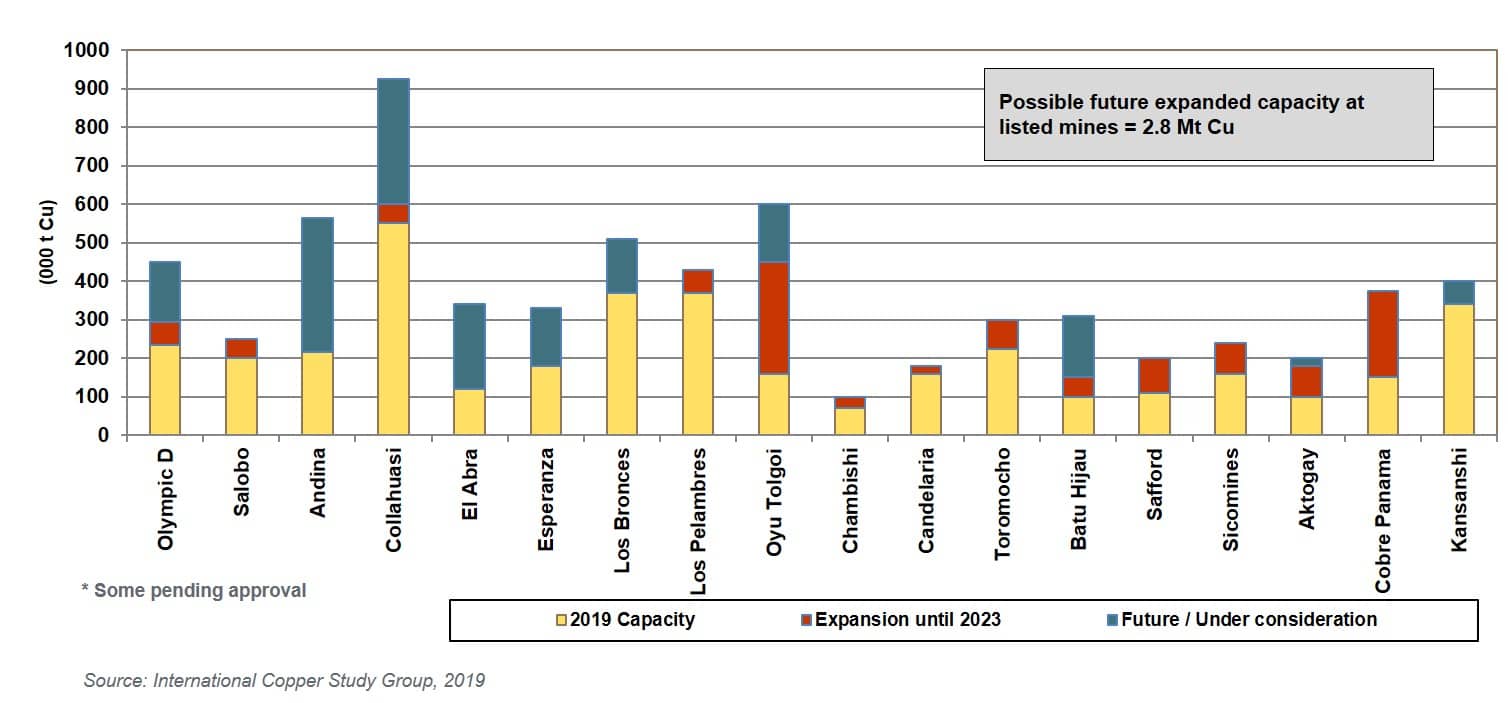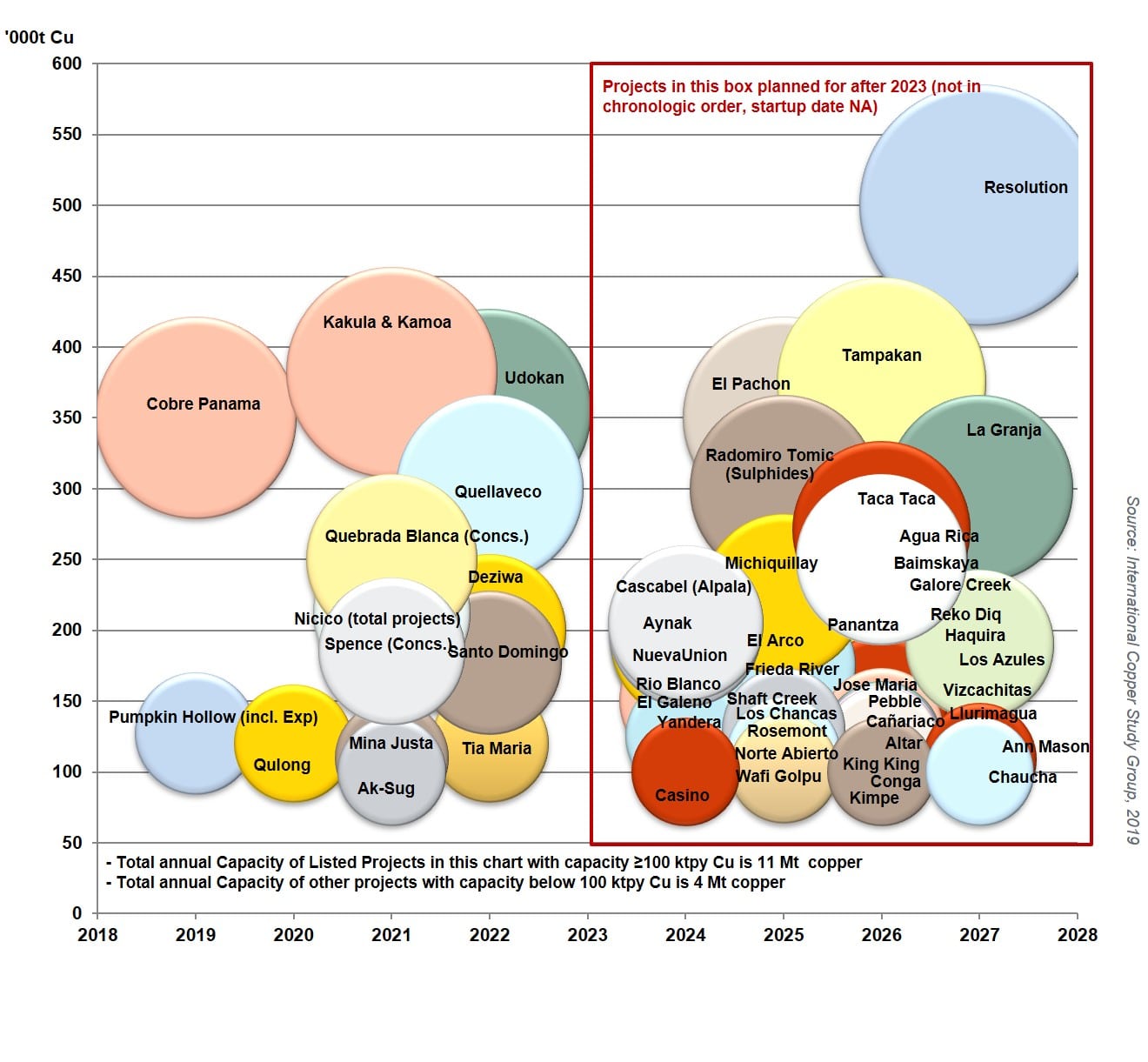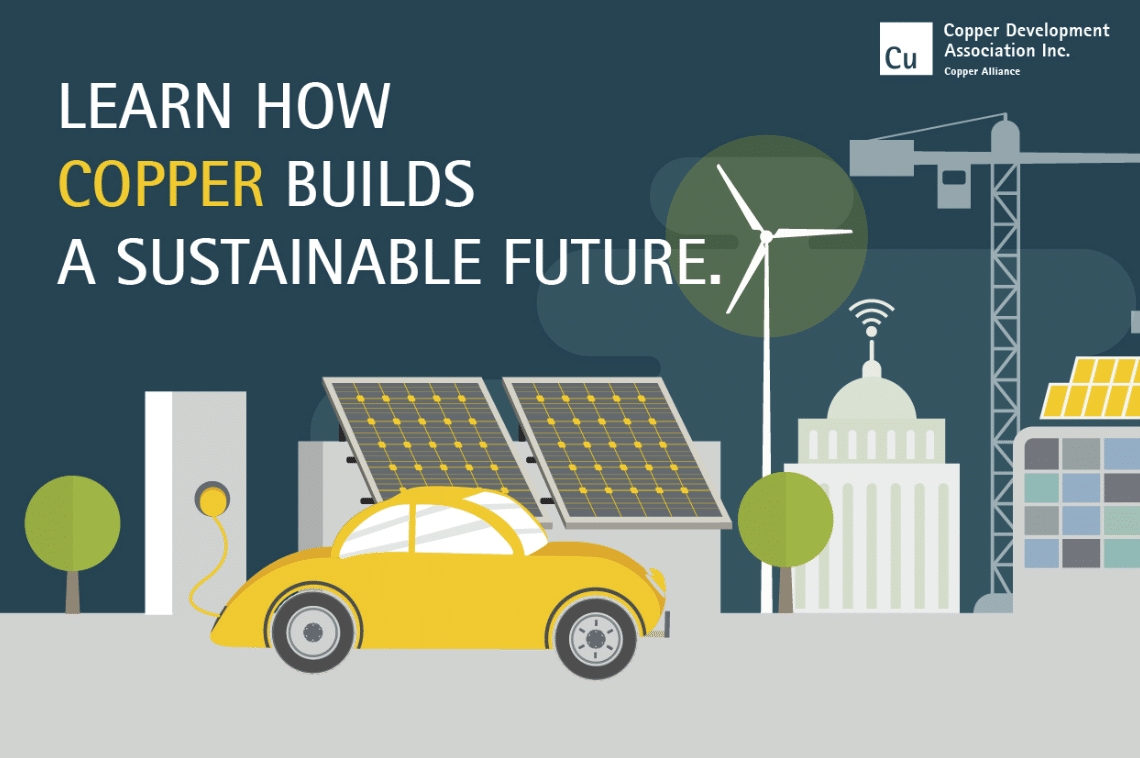Copper plays a key role in the transition to a clean energy economy. From smart homes to electric vehicles and energy storage, copper’s versatility makes it applicable for a variety of energy-efficient and renewable energy sources. As global copper use in energy continues to rise, meeting the demand will require additional copper mining and recycling sources.
Emerging technologies and innovation have vastly improved copper mining output and reduced its environmental impact. On average, the Copper Alliance® members surveyed invest a combined $20 billion a year to improve their contribution to sustainable development in areas such as protecting the environment and ensuring the safety of operations.
The charts below, provided by the International Copper Study Group (ICSG), offer an overview of new copper mining projects and expansions to existing mines.


These figures show meeting the rising demand for copper is attainable, but investments and political stability are also needed. Click for more information on how the copper industry is prepared the future of copper demand.




